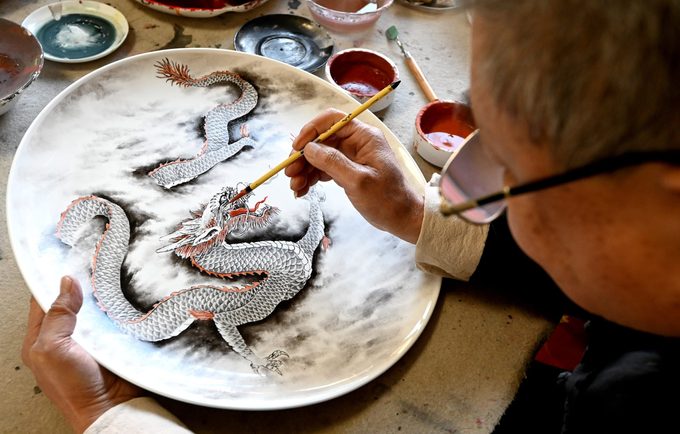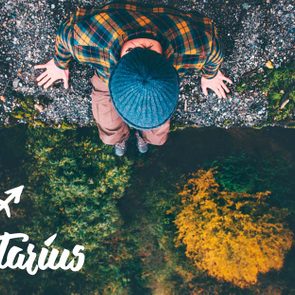The Chinese dragon is more than just a lucky symbol!

Chinese Dragons: Why They’re So Important in Chinese Culture

Mark your calendars—Chinese New Year 2025 kicks off on Wednesday, Jan. 29! While we bid farewell to the Year of the Wood Dragon, the legendary Chinese dragon remains a powerful symbol, deeply rooted in Chinese culture. But what’s the story behind this mythical creature? Where did it come from, and what does it truly represent?
We did some digging and spoke with Bao Ho, a Hong Kong–born designer who worked on Lush’s 2024 Lunar New Year Collection, to uncover the fascinating origins, meanings and traditions surrounding the Chinese dragon. And there’s plenty of history to unpack! In fact, according to Ho, “people believe they’re ‘Descendants of the Dragon.'” Historically, they would pray to dragons in hopes of receiving blessings and protection from these mythical creatures. And eventually, she adds, “dragons became symbolic and a part of the Chinese culture.”
So, as we step into 2025’s Year of the Wood Snake, let’s keep the spirit of the dragon alive. Dive into the rich history of Chinese dragons, discover how they differ from their Western counterparts and find out why they continue to captivate the world even today.
Get Reader’s Digest’s Read Up newsletter for more holiday insights, fun facts, humor, cleaning, travel and tech all week long.
What does the Chinese dragon symbolize?
Every civilization has a creation story. The creation myth for the Chinese people is one in which the Chinese dragon plays a key role. There are many different interpretations of the Chinese creation story, but according to legend, a dragon (among other celestial beings) is said to have aided Pan Gu, creator of all things, in the early stages of making the world. In another variation on the creation theme, a goddess named Nu Gua, who had the torso of a woman and the tail of a dragon (or a snake, according to early lore), molded the first humans out of mud and became known as one of the most divine beings. “According to myths, dragons control the weather, giving people rain so they can grow food,” Ho says. “Sometimes, dragons were also known to punish bad people.”
The dragon is also a central part of China’s tribal history. It is said that when “Yellow Emperor” Huang Di defeated another tribe, he incorporated that tribe’s animal totem into his own coat of arms, which was a snake. The body of the snake became mixed with the limbs and features of other animals (meaning the other animals of the Chinese zodiac), creating a dragon. So the Chinese dragon also symbolizes a unified China.
Are Chinese emperors descendants of dragons?
While all Chinese people are said to be descendants of the Chinese dragon, the emperor has long been thought of as a human incarnation of the dragon. Historically, the Chinese emperor was the only person with the divine right to wear robes of the dragon—yellow, blue, red and light blue robes with nine dragon patterns for special occasions and feast days. The dragon is considered the most divine animal, and as a result, only the emperor is allowed to wear the robes of divinity.
What are the nine Chinese dragons?

There is not just one dragon that matters in China. In fact, there are nine dragon children that can be found all throughout Chinese art and architecture: Bixi, Chiwen, Pulao, Bi’an, Taotie, Suanni, Yazi, Jiaotu and Baxia. In the book Chinese Symbolism & Art Motifs: A Comprehensive Handbook on Symbolism in Chinese Art Through the Ages, C.A.S. Williams notes that each of the nine Chinese dragons have different abilities and bodies, representing different characteristics and values. The use of a particular dragon in Chinese architecture denotes the type of energy or purpose of a place. According to Beijing Tourism, these are what the nine Chinese dragons represent:
- Bixi: Bixi has turtle-like features. You’ll find him in temples and ancestral halls, since he’s described as being “an uncomplaining animal with unusual strength.”
- Chiwen/Chiwei: This dragon son looks like a lizard without a tail. He can swallow fire and has the ability to cause rainfalls. So you’ll find his image on roofs or at the corners and ridges of a hall.
- Pulao: Pulao actually looks like a dragon, but smaller. Because he’s known to enjoy roaring, this Chinese dragon’s image is typically placed on bells. People will even make a wooden striker into the shape of a whale, as his fear of them causes him to roar.
- Bi’an: This Chinese dragon son looks like a tiger. Because he’s interested in prisons and judicial cases (along with having a brave personality), his image is engraved on the doors of prisons.
- Taotie: Taotie has the body of a wolf and is described as having a greedy love for food. People engrave the image of his head on ritual vessels or decorative objects, like bells or tripods.
- Baxia: While Baxia is not a fish, he has a fish-like appearance. This Chinese dragon loves water, leading people to engrave his image on the top of stone bridge railings.
- Yazi: Yazi has the body of a jackal. Because he’s said to be fond of “bloody killings,” his image is engraved on knife handles or sword sheaths.
- Suanni: This dragon looks like a lion. Since the lion was introduced via Buddhism, his image can be found on Buddha altars.
- Jiaotu: Jiaotu has the body of a mussel or snail. People engrave his image on doors or door boards for protection. This representation comes from how mussels and snails tightly close their shells when attacked.
What do the colors of the Chinese dragon represent?
Dragons are depicted in different colors for different symbolic purposes. The yellow dragon, for instance, is a symbol of nobility, while the red dragon in China is typically seen as a symbol of luck and prosperity. “The dragon in my work is green and blue,” says Ho. “It represents water and nature. I like to draw the blooming dragon who brings life and energy to Earth.”
What is the difference between Western dragons and Chinese dragons?
In Western culture, dragons are historically viewed as terrible creatures. For example, in the Old English epic poem Beowulf, dragons are mean-spirited, greedy beings who hoard treasure. In Chinese culture, though, dragons are never considered enemies, according to the New World Encyclopedia. Instead, they are worshipped as divine and righteous. The Chinese dragon also possesses many respectable characteristics. Aside from luck and nobility, the Chinese dragon is seen as an all-powerful being that offers wisdom and protection to its people.
Fun facts about Chinese dragons
Dragon art in China

The use of dragons in Chinese art goes back as far as the Chinese civilization itself. Depictions of this creature can be found in practically every medium, from sculpture to paintings. As previously noted, the Chinese dragon can represent myriad things, depending on how it is drawn. In the journal The Bulletin of the Cleveland Museum of Art, J. Keith Wilson explains that the rising dragon often represents “vigorous masculinity.”
The Chinese zodiac
The dragon is also the fifth member of the Chinese zodiac. People born in the Year of the Dragon are said to possess revered qualities of the dragon, including intelligence, pride and ambition. Possible flaws of this Chinese zodiac sign include arrogance and impulsivity. The Chinese dragon years over the last century were 1916, 1928, 1940, 1952, 1964, 1976, 1988, 2000, 2012 and 2024. The next Year of the Dragon won’t come again until 2036.
Dragon feng shui
Dragons are wonderful figures to have in the home. They are believed to bring good fortune and protection. However, how the dragon is placed affects the energy in the home. For example, proper feng shui dictates that dragon figurines should always be placed behind you in an office area to support you. If placed in front of you, you will be in opposition with the dragon (not good). Placing a dragon totem near a source of water is also supposed to bring wealth and good fortune.
The dragon dance

The dragon dance occurs at every Chinese New Year celebration, making it one of the most popular and well-known Lunar New Year traditions. It takes a number of talented people to make the large dragon costume move and dance with fluidity. The red dragon is the strongest symbol for good luck and prosperity in China, which is why it is used to usher in good tidings for the new year.
But dragons aren’t just reserved for ringing in the new year. They are present in almost every type of celebration, including the traditional annual Dragon Boat Festival, which is celebrated to commemorate the exiled poet Qu Yuan, who opposed the state of Qin during the Warring States Period. It occurs on the fifth day of the fifth month of the Chinese lunar calendar. The dragon boat race is a highly anticipated event each year and takes place across all the country’s waterways.
About the expert
|
Why trust us
At Reader’s Digest, we’re committed to producing high-quality content by writers with expertise and experience in their field in consultation with relevant, qualified experts. We rely on reputable primary sources, including government and professional organizations and academic institutions as well as our writers’ personal experiences where appropriate. For this piece on the Chinese dragon, Reader’s Digest spoke with Bao Ho, a Hong Kong–based artist. We verify all facts and data, back them with credible sourcing and revisit them over time to ensure they remain accurate and up to date. Read more about our team, our contributors and our editorial policies.
Sources:
- Bao Ho, Hong Kong–born artist and designer for Lush’s 2024 Lunar New Year Collection; interview, 2024
- Beijing Tourism: “The Legend of the Dragon’s Nine Sons”
- Mythopedia: “Pangu”
- Brittanica: “Nu Gua”
- China Daily: “Chinese totem”
- The Epoch Times: “Traditional Chinese Clothing: Secrets of the Dragon Robes”
- Classroom: “What Do the Colors of the Chinese Dragon Mean?”
- World History Encyclopedia: “The Dragon in Ancient China”
- Tour Beijing: “Chinese Dragon Dance”
- Public Holidays Global: “Dragon Boat Festival”





















